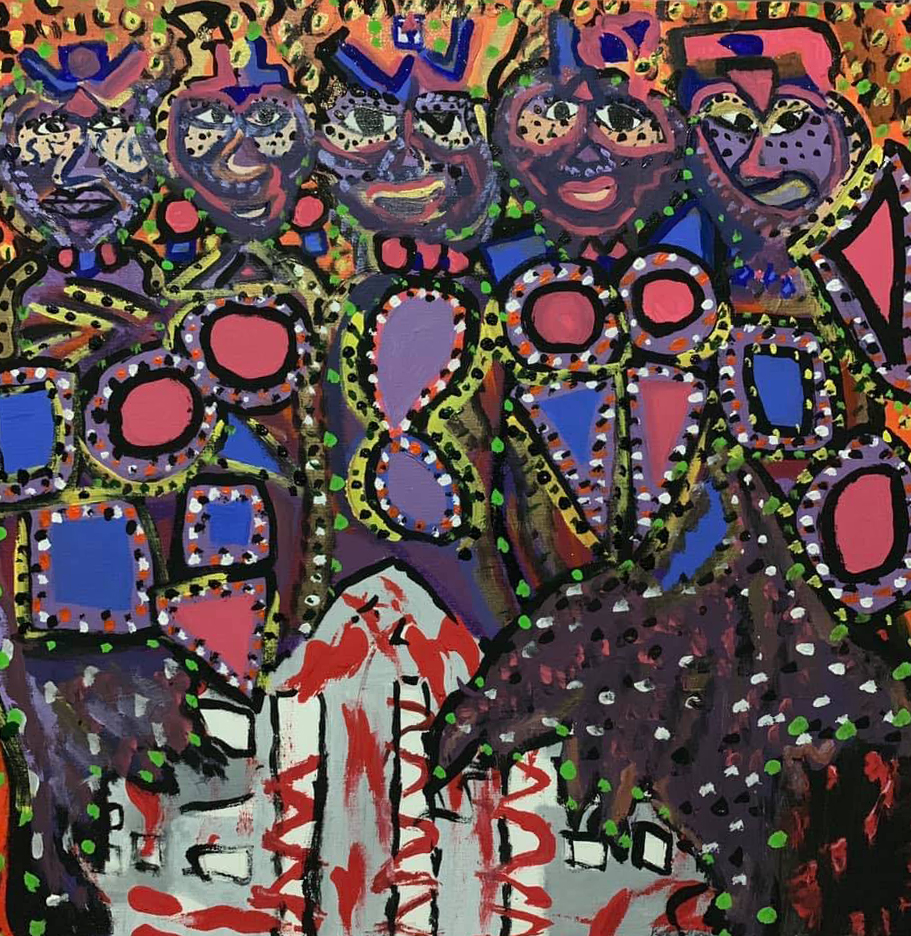Sultana Isham, “The Holy Presence of Frances Thompson,” Medium, June 6, 2020 →.
Alvin Ailey, quoted in Brenda Dixon Gottschild, The Black Dancing Body: A Geography from Coon to Cool (Palgrave Macmillan, 2003), 259.
See my essay “Bloodline: The Power of Music and Memory,” antenna.works, September 13, 2018 →.
“Noise,” Online Etymology Dictionary →.
Hannah Rosen, Terror in the Heart of Freedom: Citizenship, Sexual Violence, and the Meaning of Race in the Postemancipation South (University of North Carolina Press, 2009).
Valerie Boyd and Catherine Clinton, Wrapped in Rainbows: The Life of Zora Neale Hurston (Scribner, 2003), 369.
United States House of Representatives, The Reports of the Committees of the House of Representatives during the First Session Thirty-Ninth Conference, 1865–66 (Government Printing Office, 1866), 233.
Quoted in Rosen, Terror in the Heart of Freedom, 70.
US House of Representatives, Reports of the Committees, 197.
Quoted in Martha Hodes, Sex, Love, Race: Crossing Boundaries in North American History (NYU Press, 1999), 275.
Rosen, Terror in the Heart of Freedom, 235.
“A Colored Man Who Has Successfully Passed as a Woman for Twenty-Seven Years,” The Memphis Avalanche, reprinted in The Pulaski Citizen (Pulaski, TN), Thursday, July 20, 1876, 2.
“Under False Colors,” St. Louis Daily Globe-Democrat, July 15, 1876.
Rosen, Terror in the Heart of Freedom, 236.
Memphis Daily Appeal, quoted in Hodes, Sex, Race, Love, 285.
Rosen, Terror in the Heart of Freedom, 238.
“Francis Thompson,” Memphis Daily Appeal, July 14, 1876, 4. Quoted in Beverly Greene Bond and Susan Eva O’Donovan, Remembering the Memphis Massacre: An American Story (University of Georgia Press, 2020).
Bond and O’Donovan, Remembering the Memphis Massacre.
Georgiann Davis, Jodie M. Dewey, and Erin L. Murphy, “Giving Sex: Deconstructing Intersex and Trans Medicalization Practices,” Gender and Society 30, no. 3 (June 2016) →.
Durrenda Ojanuga, “The Medical Ethics of the ‘Father of Gynaecology,’ Dr. J. Marion Sims,” Journal of Medical Ethics 19, no. 1 (1993) →.
Imara Jones, “Opinion: Confronting Black Men’s Roles in the Murders of Black Transgender Women May Be the Only Way to Save Our Lives,” The Grio, June 24, 2019 →. Adam Polaski, “LGBTQ Advocates in New Orleans to March for Full Repeal of Louisiana’s Crime Against Nature Law,” Campaign for Southern Equality, August 29, 2019 →. Janelle Harris Dixon, “When a Black Woman Disappears, Who Is Trying to Find Her?,” Zora, October 12, 2020 →.
Fanny Brewster, African Americans and Jungian Psychology: Leaving the Shadows (Routledge, 2017).
Alex Bollinger, “Trump Administration Memo Explains How to Spot a Transgender Woman,” LGBTQ Nation, July 20, 2020 →.
Pay It No Mind: Marsha P. Johnson, directed by Michael Kasino (Redux Pictures, 2012).
Curtis M. Wong, “Why Big Freedia Doesn’t Want You to Put Her in a Category When it Comes to Gender Identity,” HuffPost, June 30, 2014 →.
In a 1970 interview with Eric Marcus, Marsha P. Johnson said she arrived at Stonewall after the riots started: “I was uptown and I didn’t get downtown until about two o’clock, because when I got downtown the place was already on fire. And it was a raid already. The riots had already started.” Making Gay History, March 2, 2017 →. In a 2001 speech, Silvia Rivera said, “I have been given the credit for throwing the first Molotov cocktail by many historians but I always like to correct it; I threw the second one, I did not throw the first one!” “Op-ed: Happy Birthda, Silvia Rivera, LGBT Rights Pioneer,” The Advocate, July 2, 2014 →. See also: Shane O’Neill, “Who Threw the First Brick at Stonewall? Let’s Argue About It,” New York Times, May 31, 2019: “The impact of Ms. Rivera and Ms. Johnson on the trans and gay movements can’t be overstated, but it doesn’t take much digging to learn that they didn’t start the Stonewall rebellion” →.
Matthew 19:12, KJV.
Isaiah 53:5–5, NSRV.
Alice Walker, “Finding a World that I Thought was Lost: Zora Neale Hurston and the People She Looked at Very Hard and Loved Very Much” (lecture at Barnard College, October 3, 2003) →.
See →.
